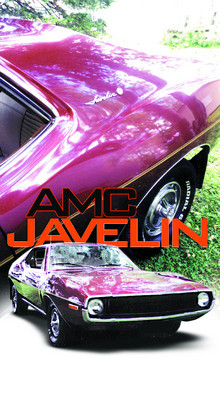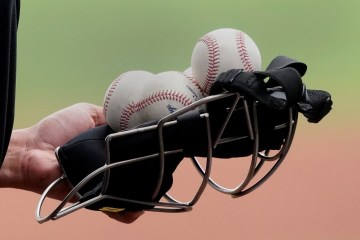Sporty Javelin signaled change for economy-minded AMC
The AMC Javelin proved that a car with the right shape and the right engine could be built by a small company, but not before releasing a floundering fish first.
One look at what poor old American Motors Corp. passed off as its sporty "image" car in 1966 was both laughable and sad all at the same time. The monstrosity that was hurriedly pressed into production was called the Marlin, a name that refers to one of the toughest, sleekest and most difficult-to-catch trophy fish found in any ocean. Unfortunately, AMC's version began floating belly-up from Day One.
What AMC's designers did was graft a huge fastback roof onto an otherwise bland and innocent-looking Rambler Classic in an attempt to pass it off as a competitor to the Ford Mustang and Plymouth Barracuda. The result was predictable. In the two brief years of the Marlin's existence (1966-'67), a mere 7,100 buyers deemed the car worthy to park in their driveways.
Meanwhile, a growing list of midsized performance cars from Ford, General Motors Corp. and Chrysler were being churned out as fast as they could be bolted together. The Mustang, Camaro, Firebird and Barracuda headed this new pony car category and AMC was about to join the race.
The Marlin, as it turned out, was simply a temporary marker while an honest-to-goodness competitor was being readied.
Its replacement, the Javelin, was a two-door hardtop (the only body style available) penned by a small group of designers headed by Richard Teague, the company's chief stylist. Prior to bringing his considerable talent and experience to AMC in 1961, Teague had toiled for GM, Packard and Chrysler.
The Javelin was unlike anything else American Motors had ever put into production. To begin with, it was downright attractive, a word that was rarely applied to any of the company's other vehicles. Teague's car sported a long hood, gently sloping roofline and short rear deck, common pony car ingredients in those days. Secondly, the Javelin, with its optional Go Package, including a 280-horsepower 343 cubic-inch V-8 that emphasized straight-line performance while ignoring AMC's usual mantra of fuel economy. It was a shameless appeal to the expanding 18- to 25-year-old target group of youthful buyers ... and it worked like a charm.
The first 1968 Javelins reached dealer showrooms in late September of 1967. Although the company had a lot of ground to make up, the cars were an immediate hit. They were lively performers, not so much from their comparatively modest engines, but due to the fact that their power-to-weight ratios allowed them to keep up to the competition.
There was yet one more surprise forthcoming from AMC. Six months after the Javelin's launch, the company brought out the AMX. This two-seater was essentially a Javelin that had been shortened by about a foot. Suddenly, staid old AMC had discovered high performance.
As with most of its competitors, AMC heavily invested in a racing program for its new car, entering both the 12 Hours of Sebring, Fla., endurance race and the Trans-Am road race series.
By the end of its inaugural year, the company had sold more than 56,000 Javelins, compared with 45,000 Barracudas, 235,000 Camaros and more than 317,000 Mustangs. The fact that a bare-bones Javelin stickered for $120 less than the Mustang certainly encouraged buyers to a degree.
For its encore, the '69 Javelin could be ordered with an optional 315-horsepower 390 cubic-inch V-8. It also marked an expansion of the company's racing program to include National Hot Rod Association-sanctioned drag racing, something that would have been considered corporate heresy only a few years earlier.
After three years of steady sales, AMC brought out its second-generation Javelin for 1971. This version was longer and wider and also featured prominent wheel arches on the front fenders, an aid to aerodynamics, but a detraction from the car's previously smooth lines.
Also, the largest engine in the Javelin lineup became a 401-cubic-inch V-8 that cranked out 330 horsepower and thirsted for premium gas.
By then, the tide was beginning to turn against musclebound pony cars. In 1974, its final year of production, Chrysler had already decided to shut down its Barracuda and Dodge Challenger lines, and Ford had already downsized its class entry, renamed the Mustang II. To make way for the infamous glass-bubble Pacer, AMC brass made the decision to kill the Javelin.
But the company had made its point. It proved that even with limited resources, but with the right design, impressive range of V-8 power and pinpoint marketing strategy, it could take on the much bigger competition and hold its own in the showroom.
The Javelin had done its job and done it well.
Malcolm Gunn is a feature writer with Wheelbase Communications. He can be reached on the Web at www.wheelbase.ws/mailbag.html Wheelbase supplies automotive news and features to newspapers and Web sites across North America.














